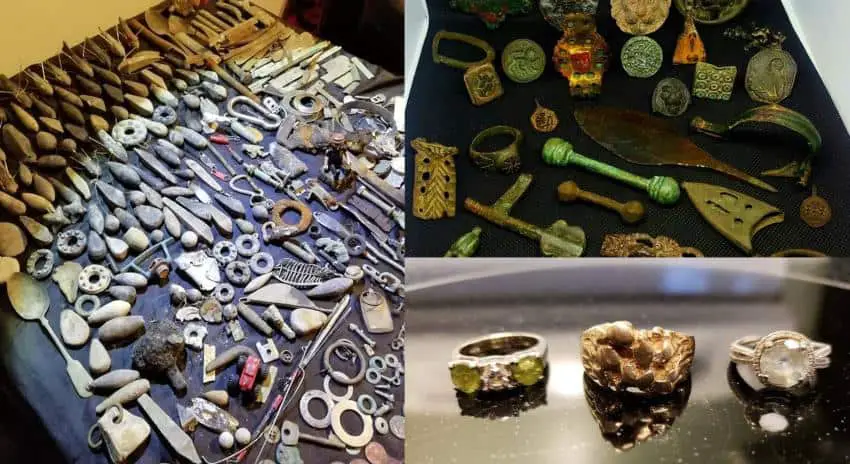
You know and I know that Metal detecting is all about finding valuable targets using your beloved machine! However, there is an obscure but highly important skill that you need to learn …
… Identifying these finds accurately!
Why?
Well, what’s the point of having a piece of metal, a coin or a mysterious relic without even knowing at least its nature and when it came from?!
In this Post, I will do my best to help you identify your detection finds in the most accurate way possible.
How your metal detector can help you identify your finds?
Today’s machines can actually tell you what find you’ve got!
This is because of the different sounds and tones it makes. You are going to hear low and high pitched signals, and then when you take a look at the LCD of the detector, you will be able to see certain numbers or bars illuminated on the screen.
This is known as the Target Identification Indicator (VDI), which indicates which type of metal is likely there underneath the ground.
One of my favorite machines when it comes to VDI clarity is this Bounty Model (Check it Here at Amazon) (You can check other Bounty Hunter Metal Detectors)
The detector target identification usually has an iron section, a silver range, and a gold range. Some detectors have indicators that are incredibly detailed, while others have more simple ones.
Each manufacturer uses a different set of target ID numbers. For example, if you are using a Teknetics model, then the target ID of 88 is likely to indicate a silver coin. However, in the Fisher ‘F’ Series detector, silver coins are listed between 64 to 66.
So, make sure to have a look at the VDI Chart of your machine which is usually detailed on the manual guide!
If not, you can make your own VDI chart by doing Air Tests …
… What’s that?
You simply switch on your machine and expose its coil to different targets (different coin sizes and types, different jewelries, all sorts of metals …) and take note of the value number your get …
… The numbers you will get while actually using your detector on the ground will be close to the numbers you’ve just noted!
Tips on identifying metal detecting finds …
1. Coins
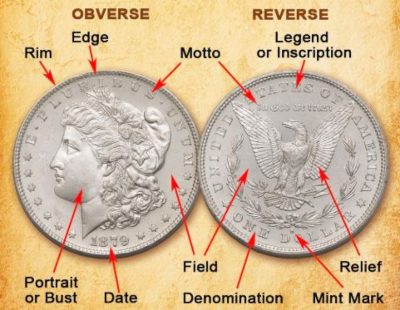
Since coins are one of the most common finds, it is necessary to know some basics on how to identify old coins. Below some basic steps you should follow:
- Search for a denomination: If the coin has no face value, it might just be a medallion instead of a coin.
- Search for a date: The easiest way to identify an old coin is by searching for a denomination and date. For example, Spanish coins have been in circulation since the early 17th century and are amongst the earliest coins to carry dates. However, many old coins minted since then have been in use for so many years that their dates may wear away.
- Pay attention to the coin’s shape: While most coins are round, it is not necessary for all of them to be circular. For example, coins manufactured before the late 1700s used to be irregular in shape. Some coins may also be shaped as polygons that look approximately like circles. For example, the 12-sided British threepence that was minted from 1937 to 1967.
- Look at the size of the coin: Find out the coin’s diameter and its thickness. It will help in identifying the coin. The diameter can be measured with a ruler, while the width can be measured with a caliper. Handle the caliper carefully to ensure that you do not damage the coin.
- Try to distinguish the coin’s color: The color of the coin may be useful to indicate what type of metal it has been made from. For example, a golden color implies that it might be made from gold, a silvery color could indicate it is made from silver, while a brown color means the coin is made from copper. While color is not a great identification factor, but it may help you narrow down your choices.
- Try to make out if there is an image on the coin.
- Look for any inscriptions on the coin or a mintmark.
- Take help from a reference catalog: There are many coin reference catalogs you can use to help identify a coin after completing the steps mentioned above. The Krause World Coin catalogs or online catalogs can help.
2. Relics

Relics are remnants from ancient cultures. It is possible to find some interesting and valuable relics with your metal detector, but how do you identify these relics?
Here are some basic questions you should ask yourself regarding the relic that may help clear up your confusion and identify the relic:
- How old does the relic appear to be?
- Is it a fake?
- Is it an archaeological or geological find?
- How can I find out what type of relic it is?
- Who made the relic? Or Can I identify which culture the relic comes from?
It is indeed quite difficult to determine the exact age of a relic and even more challenging to understand if its real or a fake. However, a professional archaeologist may be able to help you better.
The best way to identify a relic is to take the help of your nearest archeologist. Many museums also have highly experienced curators who may be able to help you identify the relic.
A great way to do so, are forums and fb groups … Just by putting a picture of your finds, you should get instant feedback!
3. Jewelry
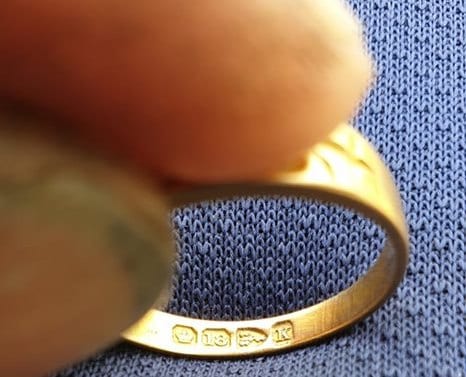
If you find jewelry with your detector, identifying it would not very difficult, but it may be challenging to understand whether the piece is valuable or not.
To identify jewelry finds, you should start by examining the jewelry item and asking the following basic questions:
- What is it?
- Can you take a guess about when it was made?
- Who made it, and where is the manufacturer located? This can be identified by any hallmarks, maker’s marks, or any other marks on the item.
- What is it made of? Silver, gold, titanium, or plastic?
- Are there any gemstones or other precious set-in items on the jewelry? It could be that it has diamonds, rubies, glass, jadeite, or classical themed micromosaic.
- What motifs are present in the jewelry item? Does it have free-flowing lines? Any geometric design elements? Industrial shapes and styling? Or sputnik-like outline?
- What does the back of the item look like?
- What other functional or decorative elements does the jewelry exhibit?
- Is it costume jewelry, or is it fine jewelry? Remember that barring a few exceptions, fashion or costume jewelry have their own specific set of research materials than those for fine jewelry.
The first step is, of course, to classify the jewelry. For example, if it’s a ring, brooch, bracelet, or a necklace.
Next is to search for a hallmark. A single trademark can let you know a great deal about the fineness of the metal, country of origin, a timeframe of manufacture, weight of the piece, and many other valuable information can be derived from a hallmark.
A great way to check the jewelry is to examine if there are any marks, for example:
- Number followed by ‘k’ (example 18k) means that you are dealing with Gold. The number indicates how pure of a gold it is, for example 24k means that it is pure Gold.
- GF (Gold-Filled) means that the jewelry is made by a given metal and there is gold on the surface.
- 925 or .925 means that you are dealing with sterling silver (about 92.5% of silver and rest are other metals)
- Plat means platinum
- Pall means Palladium
There are dozens of other marks, but these are the most common ones …
… Finally, if you are not able to find any markings or not able to tell if it’s a valuable piece of jewelry or not, then getting it checked by a known jeweler might be a good idea.
4. Metals in general

While in most cases, your metal detector itself can identify the metal you have found, in some cases, it is possible that you come across a metallic find and are unable to determine what metal it is.
The most common way to identify a metal is the appearance test. The physical features may help you determine what the metal is. You must already be familiar with how some common metals look like, or you can also look up images of various metals to find a match online.
There are metals that look quite similar to one another (Platinum and Palladium for e.g.). For example, brass and gold are often confusing since they have the same color. However, brass will have a bell-like vibrating sound if you hit it, while gold will be heavier.
Another way to identify metals is through the magnet test. This test can tell you if the metal is ferrous or non-ferrous.
Ferrous metals contain iron, which makes them magnetic. Non-ferrous metals are non-magnetic, but they are also more valuable than ferrous metals.
There is also the fracture test, which helps you identify the metal by analyzing a small broken part.
5. Antique Bottles
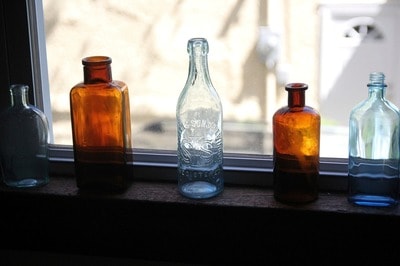
Finding antique bottles may sometimes prove to be quite valuable. Many detectorists also like to collect antique bottles that they’ve found.
While collecting these bottles is a fun activity, it is more challenging to try and decipher the markings on the glass.
These markings can help you determine the age and value of the bottle. There are some other factors also that can tell you the worth of the antique bottle.
Factors such as the overall condition, age, rarity, and the markings on the side or bottom of the bottle can provide quite a lot of information about the history and value of the bottle.
Indeed, the closer the bottle is to its original condition, the more valuable it will be.
Even the color of the bottle is an essential marker for identifying the item. The rarer a bottle color, the more valuable it will be for collectors. Blue and Orange are generally considered to be quite rare!
The type of bottle also makes a difference. You can search online to see the different types of antique bottles that are commonly found by detectorists, and it may help you identify your find as well.
E-bay is a great place to look at! Many antique bottles are on sale, I don’t advice you to buy unless you are 100% confident about the product and/or the seller, but it is still a great way to have a feel of what’s available, what does it look like and the listed prices.
6. Ammunition
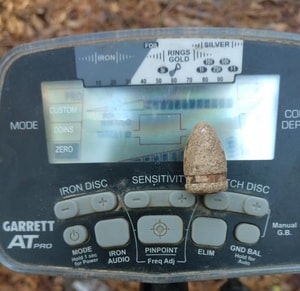
The best way to identify ammunition is to look at it carefully, feel it, touch it, and try to understand what it might be.
To identify what a specific round or piece of ammunition is, then there is usually a head stamp that will help you identify the piece. However, some old ammunition pieces do not have a head stamp or any other information stamped on them.
Some ammunition pieces do have a head stamp, and it may help you identify what exactly you have found.
If you have found a cartridge, then keep in mind that standard cartridges for civilian or military applications tend to vary considerably by country.
If you have a doubt about what ammunition you have found, then asking a local gunsmith or historian may help.
7. Other finds
Metal detecting can yield some interesting finds sometimes. From mobile phones to cameras and other devices, some discoveries can prove to be quite surprising.
You may also be lucky and come across a massive gold nugget. For example, the Boot of Cortex gold nugget, which was found by amateur detectorists and is today valued at $1.85 million.
Some things may prove to be tricky to identify, and you may have to turn to the internet to help determine what it is that you have found.
I am talking here about things like meteorites! This is the most challenging aspect of the hobby as far as I am concerned!
What if you fail to identify your find?
It can be very frustrating to have a find that you either cannot identify or you are unsure of the value or rarity of your discovery …
… If you have trouble identifying your find, then turning to your local museum or any local archaeologist may help.
If all else fails, then the checking online may always come to your help.
Just take several pictures of your find from different angles and post them on various related forums to get feedback.
There are also many reference books for certain items, such as coins, jewelry, and relics that may help you determine what you have found.
For example, the book What Do to With Granddaddy’s Coins (Check it Here at Amazon) is an excellent reference point for helping you identify old coins.
Here are some other reference books that are frequently used by detectorists to help identify their finds.
- Albert – Record of American Uniform and Historical Buttons : this book is the go-to book for the identification of Civil War buttons and other types of American military buttons. Other historical buttons also find a mention in this book.
- McKee & Mason – Civil War Projectiles II (Check it Here at Amazon): This book is very popular with Civil War detectorists and bullet collectors. While there are many other reference books on identifying bullets, this one is said to be the easiest to read.
- Whitman’s Official Red Book : If you are in the US and have found an old coin which you cannot identify, then this is the book that can help you. The book also provides approximate values for coins in every possible condition.
- American Military Belt Plates : Many detectorists like to collect belt buckles, breastplates, and other accouterment plates, and this book is an excellent guide to help identify these finds.
- Insignia of Independence by Don Troiani : This is a great reference book for the identification of buttons, plates, and other accessories from the American Revolution.
Conclusion
Hope this article was not too long of a read for you!
Obviously I tried to talk about many aspects and most of the finds you can come up with … Hopefully, you will find that helpful.
Keep in mind that Beach has the most potential when it comes to valuable finds, that’s why, I’ve put together this Comprehensive Beach Metal Detecting Guide! You will learn a lot in there …
… Also, if you are looking for machine that can help you identify objects accuratly, please have a look at this article!
